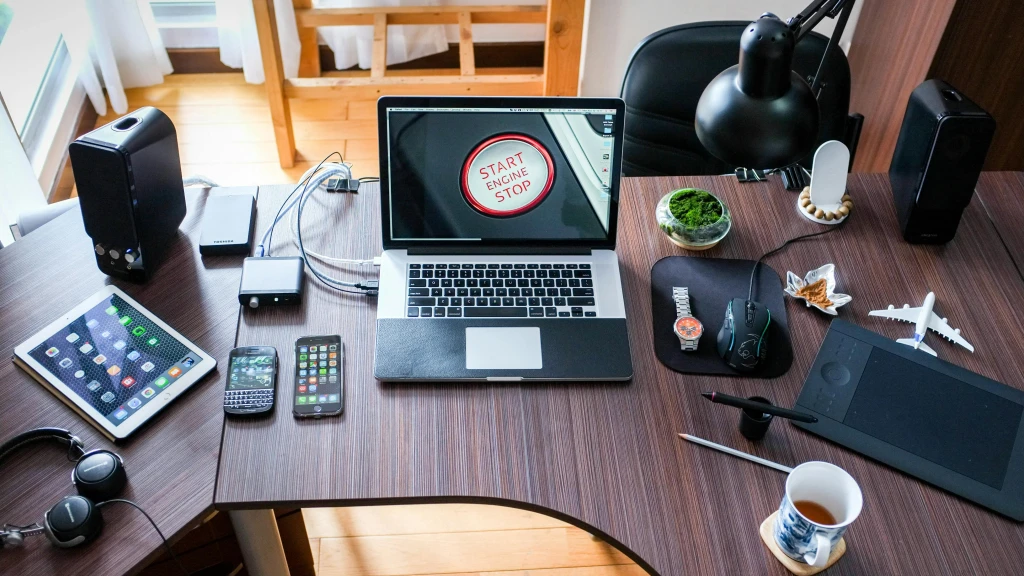How to Create an Effective Remote Workspace at Home
Visits: 580

How to Create an Effective Remote Workspace at Home
In today’s world, working remotely has become a common practice, especially for Canadian residents. Setting up an effective home office is crucial for productivity and comfort. In this article, we will explore how to create an ideal workspace at home, focusing on practical tips and advice for those who are not business experts but want to succeed in their remote roles.
1. Choosing the Right Space
The first step in creating an effective home office is choosing the right space. Here are a few factors to consider:
| Factor | Why it Matters |
|---|---|
| Privacy | A quiet, private space helps minimize distractions and ensures you can focus. |
| Lighting | Natural light improves mood and productivity. If possible, set up near a window to maximize daylight exposure. |
| Noise | Choose a spot away from noisy areas like the kitchen or living room to keep disturbances to a minimum. |
| Space | Ensure there is enough room for your equipment (e.g., laptop, monitor) and personal comfort, like an ergonomic chair and a desk of proper size. |
2. Essential Equipment
Your home office setup doesn’t need to be expensive, but investing in a few essential items can make a significant difference. Here’s a list of must-haves:
| Equipment | Importance |
|---|---|
| Desk and Chair | An ergonomic chair and desk are key for comfort and preventing back or neck pain. Adjustable options are ideal for ensuring proper posture during long hours of work. |
| Laptop/PC | Choose a device that suits your work needs—powerful enough for your tasks but within your budget. |
| Monitor | A second screen can improve productivity by making it easier to work with multiple documents or apps at once. |
| High-Speed Internet | Stable internet is crucial for video calls, cloud-based work, and overall productivity. Check with local providers for the best home internet options. |
| Keyboard & Mouse | A comfortable keyboard and mouse reduce strain on your wrists and enhance efficiency. |
3. Ergonomics and Comfort
Maintaining proper posture and comfort is essential when working from home, as it can help prevent health issues like back pain or eye strain. Here are some ergonomic tips:
| Tip | Benefit |
|---|---|
| Use a separate monitor or laptop stand | Keeps your screen at eye level, reducing neck strain. |
| Adjust your chair height | Your feet should be flat on the ground, and your knees at a 90-degree angle. |
| Take regular breaks | Stand up, stretch, or walk every hour to avoid stiffness and increase focus. |
| Consider using a footrest | Supports your feet and improves posture while seated. |
4. Organizing Your Workspace
A cluttered workspace can lead to distractions and reduced efficiency. Here’s how to keep your office organized:
| Organizational Tip | Why It Works |
|---|---|
| Minimal Desk Setup | Only keep essential items on your desk (e.g., computer, notebook) to avoid distractions. |
| Drawer or Shelf System | Helps store papers, supplies, or files neatly and out of sight. |
| Cable Management Tools | Avoid tangled cords with clips or cable organizers. This also keeps your workspace looking tidy. |
5. Work-Life Balance in a Home Office
One of the challenges of working from home is keeping your work and personal life separate. Here are tips to maintain a healthy work-life balance:
| Tip | Description |
|---|---|
| Set Clear Work Hours | Stick to a regular work schedule to avoid working too late or burning out. |
| Create a Morning Routine | This helps signal to your brain that it’s time to start the day and work. |
| Separate Personal and Work Spaces | If possible, keep your home office space dedicated to work and not used for other activities. |
6. Technology and Communication Tools
A productive home office also relies on using the right technology and communication tools. Here’s a list of common tools to help you stay connected and productive:
| Tool | Purpose |
|---|---|
| Zoom or Microsoft Teams | For video meetings and virtual collaboration. |
| Slack or Microsoft Teams Chat | For quick communication with colleagues or clients. |
| Google Drive or Dropbox | Cloud storage solutions to access documents from anywhere. |
| Trello or Asana | Project management tools that help keep track of tasks and deadlines. |
7. Maintaining Focus and Productivity
Working from home can come with distractions, but these tips can help you stay on task:
| Tip | Benefit |
|---|---|
| Set Daily Goals | Write down your tasks each morning to stay organized. |
| Use Time Management Techniques | Consider using the Pomodoro technique (25 minutes of focused work, 5-minute breaks). |
| Limit Social Media | Install browser extensions or set timers to prevent social media from taking up too much time. |
Conclusion
Creating an effective home office is all about finding the right balance between comfort, productivity, and organization. By choosing a dedicated space, investing in essential equipment, and following ergonomic and productivity tips, you can ensure a more productive remote work experience from the comfort of your home in Canada. Whether you’re a seasoned professional or new to the remote work world, these strategies will help you succeed.
